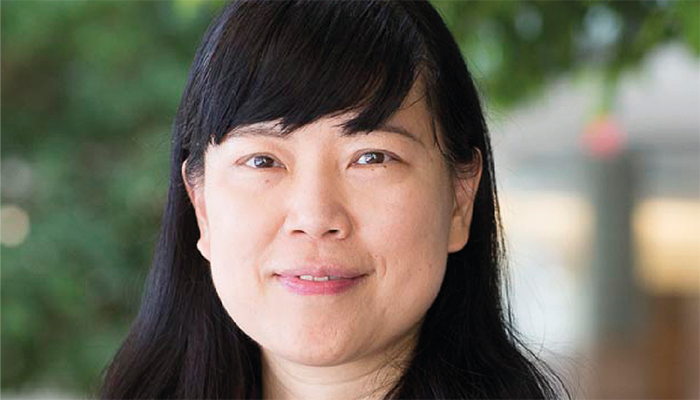
Credit: Supplied by Interviewee
What are your main research aims?
My research program is centered around the development of novel mass spectrometry-based technologies and enabling tools to study challenging and significant neuroscience and biomedical problems that are relevant to human health.
Which analytical frontier in human health and disease are you most excited about?
I am most excited about quantitative proteomics and posttranslational modification analysis at the systems level for biomarker discovery and disease diagnosis. Another exciting analytical frontier in human health and disease is the rapid advancements of spatially resolved multiomics analysis via imaging mass spectrometry and single-cell omics.
Can analytical science make personalized medicine a reality? If so, how?
I believe that with the rapid development of more sensitive and high-resolution and precision measurement tools, analytical science can make personalized medicine a reality. The continued development of advanced analytical tools, especially mass spectrometry-based omics approaches, enables high-throughput quantitative measurement of biomolecular features such as proteins, posttranslational modification isoforms, lipids and metabolites and their structural isomers in healthy and diseased conditions. These systems level omics technologies have revolutionized medical research by enabling large-scale studies and revealing individual differences, thus leading to more precise clinical diagnosis and personalized medicine and individualized treatment.
How will analytical science transform how we diagnose and treat over the next 20 years?
Most of the current disease diagnosis and treatment have been focusing on a single protein or a pathway, however, many diseases are multifactorial disorders that require a more holistic view at the systems level, especially for those diseases that we currently do not have effective treatment or lack of early diagnosis. With the continuous development of more advanced analytical instrumentation, especially mass spectrometers that offer higher throughput, better sensitivity, and higher resolution, together with innovative sample preparation and chemical tagging approaches, we are positioned to obtain a more complete and deeper coverage of various biomolecules. This advancement will lead to discovery of novel biomarkers for disease diagnosis and evaluate treatment efficacy in a broader system context. It will also generate new hypotheses for better understanding of disease mechanisms and potentially lead to novel therapeutic targets and treatment.
How would you spend a $1 billion research grant?
I would spend a significant portion of the budget to assemble a multi-disciplinary research team with a major goal to train the next generation analytical scientists who can identify significant problems and devise effective solutions and can collaborate with biologists, clinicians, and information scientists to tackle the important challenging problem facing the clinical research and health care. Another significant portion of the budget will be used to develop next generation analytical technology and acquire the most advanced instrumentation available in the field. The overall goal is to build an infrastructure to revolutionize MS imaging tools to map diverse biomolecules (proteins, lipids, glycans, PTMs etc) in healthy and diseased tissue, with subcellular resolution and three-dimensional spatial distribution. Further funding will be utilized to disseminate information, spread the technology, and create software tools and build databases that can be widely available to the research community worldwide.
What is the biggest challenge facing the field right now?
With the advancements in analytical tools, large-scale and large-size datasets have been generated at an unprecedented rate. The need for effective computational tools to handle and process these large datasets, integrate data from multiple domains and molecular layers to extract meaningful biological information and conclusions that can guide clinical diagnosis and treatment represent one of the biggest challenges facing the field. Along the same line, translating candidate biomarkers from the lab into clinical applications presents a major challenge facing the field, and is very costly. Lowering the cost of MS instrumentation without sacrificing performance would be key to make these technological advancements more accessible to the broader community and increase its society impact.
What is the most exciting development or emerging trend in analytical science today?
There have been many exciting developments in analytical science these days; for me, single-cell multi-omics analysis and artificial intelligence/machine learning-assisted multiomics analyses and biomarker discovery, are among the most exciting developments and emerging trends in measurement science. These new developments and emerging technologies open up a swatch of new applications ranging from creating tissue- and cell-specific atlas, discovery of novel cell types, to better understanding tumor heterogeneity and chemotherapy resistance in cancer, and gaining novel insights into complex diseases and discovery of new pathways and networks. Indeed, the capability to map cellular spatial information with multiomics modalities could have tremendous impact on both fundamental and translational research.
What’s missing from in the analytical toolbox?
Hardware wise, it would be wonderful to have better instrumentation that offers highly sensitive ionization source that works for a broad range of biomolecules with less ionization suppression and deeper molecular coverage; software wise, we would benefit from having improved computational tools that can integrate multidimensional data acquired from disparate techniques and complementary modalities to achieve a more comprehensive understanding of biological systems and their functioning in health and disease.
Tell me about an important problem that could be tackled through interdisciplinary work.
Creating a region-specific and cell type-specific biomolecular atlas of the brain of Alzheimer’s disease to gain molecular insights into aging and age-related diseases. This highly interdisciplinary project would require a multifaceted approach including a suite of spatial and single cell multi-omics measurements enabled by mass spectrometry imaging, animal models of aging and Alzheimer’s disease and clinical specimens, as well as computational tool development and machine learning approaches and classical biochemical and molecular approaches for biomolecule validation, co-localization, and multidimensional correlation in the context of neurodegenerative disease.
What’s the most memorable piece of advice you’ve ever received?
Find your passion, enjoy what you do, and follow your dreams. Keep your self-belief and never give up. Hard work and perseverance will pay off.
Lingjun Li is Vilas Distinguished Achievement Professor of Chemistry and Pharmaceutical Sciences, Charles Melbourne Johnson Distinguished Chair in Pharmaceutical Sciences, School of Pharmacy and Department of Chemistry, University of Wisconsin-Madison, USA




